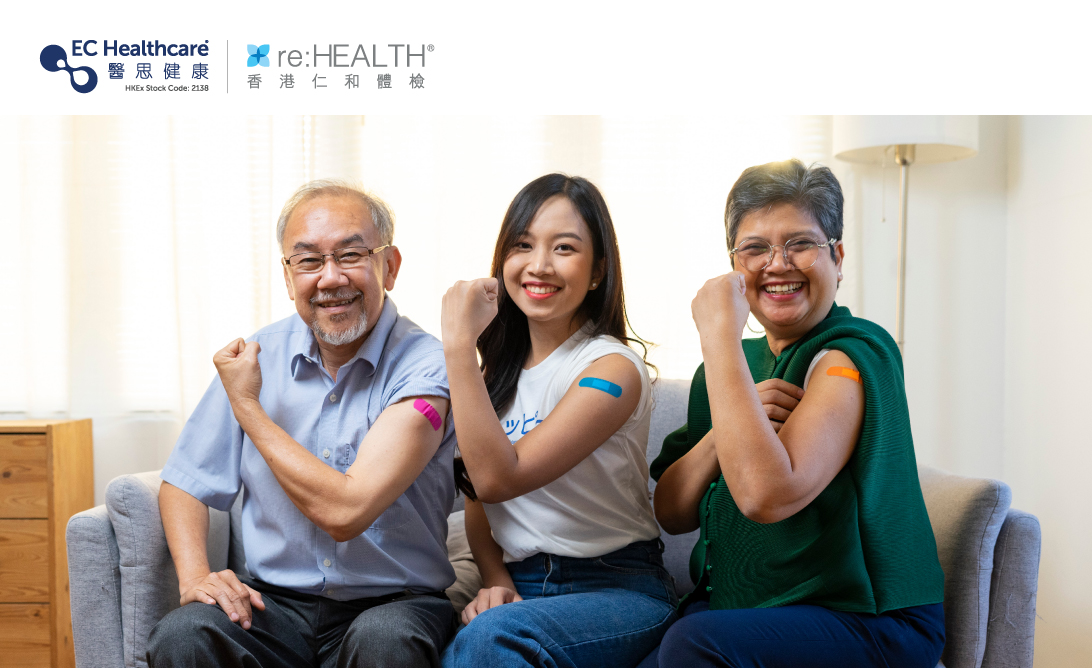15-valent Pneumococcal Vaccine Provides Superior Protection! A Guide to Choosing the Right Pneumococcal Vaccine


Pneumonia, known as the second leading cause of death in Hong Kong, instills fear in people. Among its various forms, pneumococcal infection, which can be transmitted from person to person, is widely recognized. It commonly affects children aged 2 to 4 and individuals aged 65 and above. Pneumococcal infections, depending on the site of infection, can lead to mild, severe, or even fatal diseases, with patients often requiring weeks to recover.
How Dangerous is Pneumococcus?
Pneumococcus, also known as Streptococcus pneumoniae, is a common bacterium found in the respiratory tract of humans. It is responsible for causing pneumococcal infections, which can be transmitted through respiratory droplets when an infected person coughs or sneezes, close contact with an infected individual, or touching contaminated surfaces.
Even healthy individuals can be carriers of pneumococcus. When the immune system is weakened, pneumococcus can invade the lungs, causing inflammation and fluid accumulation in the alveoli. This can lead to invasive pneumococcal infections such as pneumonia, sepsis, bacteremia, and meningitis, which are life-threatening conditions. Symptoms may include fever, difficulty breathing, cough, profuse sweating, chills, fatigue, chest pain, and joint pain, putting their lives at risk. Currently, there are over 100 serotypes of pneumococcus, with serotype 3 posing the greatest threat, with a mortality rate of 30 to 47%. Many severe cases of pneumococcal infection in Hong Kong are caused by serotype 3, leading to suppurative pneumonia. This condition results in respiratory distress, requiring the need for pus drainage through puncture procedures.
High Risk: Children and Elderly Face Fatal Pneumococcal Threat in 3 Days!
According to local epidemiological data, invasive pneumococcal infections are more common in children aged 2 to 4 and individuals aged 65 and above. These age groups are more susceptible to severe cases of pneumococcal infection. In Hong Kong, serotype 3 is the predominant strain causing invasive pneumococcal infections, accounting for 50% of all pneumococcal cases from 2015 to 2019.
Due to weakened immune systems in children and the elderly, coupled with lower levels of pneumococcal antibodies in young children, the onset of invasive pneumococcal infections can lead to sudden and rapid deterioration. A 1-year and 5-month-old girl in Taiwan succumbed to invasive pneumococcal infection within a short span of less than 3 days from the onset of symptoms. The risk of hospitalization for individuals aged 65 and above, following pneumococcal infection, is over 10 times higher compared to those aged 18 to 49. Similarly, patients aged 50 to 64 face a 6-fold increased risk of hospitalization. These findings underscore the escalating severity of pneumococcal infections with advancing age.
High-Risk Individuals for Pneumococcal Infection
.Children aged 5 and below
. Elderly individuals aged 65 and above
. Those with cochlear implants
. Immunocompromised individuals (including those without a spleen, HIV/AIDS patients, and cancer patients)
. Long-term patients with cardiovascular diseases, lung diseases, liver diseases, kidney diseases, diabetes, and obesity (with a body mass index of 30 or above)
. Previous history of invasive pneumococcal disease or cerebrospinal fluid leakage
. Long-term neurological conditions affecting respiratory function.
Treatment and Prevention Measures for Pneumococcal Infection
The primary approach to treating pneumococcal infections is the use of antibiotics. However, due to the widespread misuse of antibiotics, pneumococcus has developed significant antibiotic resistance, complicating treatment. Current management of pneumococcal infections often involves the simultaneous or alternating use of multiple antibiotics to achieve effective results.
Given the significant impact that pneumococcal infection can have on the body, prevention is paramount. Vaccination against pneumococcus is a safe and effective preventive measure. Additionally, practicing good personal hygiene, maintaining clean hands, ensuring proper ventilation, engaging in regular exercise, wearing masks in crowded public places, and avoiding tobacco and alcohol can help bolster immunity.
Choosing the Right Pneumococcal Vaccine: Understanding the Differences
Currently, there are four pneumococcal vaccines available in the Hong Kong market: the 13-valent pneumococcal conjugate vaccine (PCV13), the 15-valent pneumococcal conjugate vaccine (PCV15), the 20-valent pneumococcal conjugate vaccine (PCV20), and the 23-valent pneumococcal polysaccharide vaccine (PPSV23). Let's explore the variations among these pneumococcal vaccines:
PCV13 (Prevenar 13) | PCV15 (Vaxneuvance 15) | PCV20 (Prevenar 20) | PCV23 (Pneumovax 23) | |
| Manufacturer | Pfizer | MSD | Pfizer | MSD |
| Vaccine Type | Pneumococcal Conjugate Vaccine (Contains serotype-specific pneumococcal capsular polysaccharide) | Pneumococcal Polysaccharide Vaccine (Contains only capsular polysaccharide) | ||
| Serotypes | 1, 3, 4, 5, 6A, 6B, 7F, 9V, 14, 18C, 19A, 19F, 23F | 1, 3, 4, 5, 6A, 6B, 7F, 9V, 14, 18C, 19A, 19F, 22F, 23F, 33F | 1, 3, 4, 5, 6A, 6B, 7F, 8, 9V, 10A, 11A, 12F, 14, 15B, 18C, 19A, 19F, 22F, 23F, 33F | 1-5, 6B, 7F, 8, 9N, 9V, 10A, 11A, 12F, 14, 15B, 17F, 18C, 19A, 19F, 20, 22F, 23F, 33F |
| Suitable for | Infants and adults aged 6 weeks and above | Infants and adults aged 2 months and above | High-risk individuals aged 18 and above and the elderly aged 65 and above | High-risk individuals aged 2 and above and the elderly aged 65 and above |
Clinical studies have demonstrated that the PCV15 exhibits a 60% higher immune response against serotype 3 in healthy adults aged 50 and above compared to the PCV13. Moreover, in healthy infants and children, the immune response is even more noteworthy, with a 73% higher response observed. The research also highlights that the PCV15 outperforms the PCV13 in terms of immunogenicity against specific serotypes 22F and 33F. Furthermore, when compared to the PCV20, the PCV15 demonstrates a 77% superior opsonophagocytic activity (OPA) against serotype 3.
All indications point to the PCV15 being more effective in preventing invasive pneumococcal infections caused by serotype 3. In September 2023, the Department of Health announced the official adoption of the PCV15 in the Hong Kong Childhood Immunisation Programme and Pneumococcal Vaccination Programme, replacing the PCV13.
On the other hand, the PCV23 covers a broader range of serotypes, theoretically providing more comprehensive protection. However, clinical studies have shown that the effectiveness of the PCV23 in preventing non-invasive pneumococcal pneumonia is not as optimal.
For more information about pneumococcal vaccines, please consult your family physician.
Related Brands










